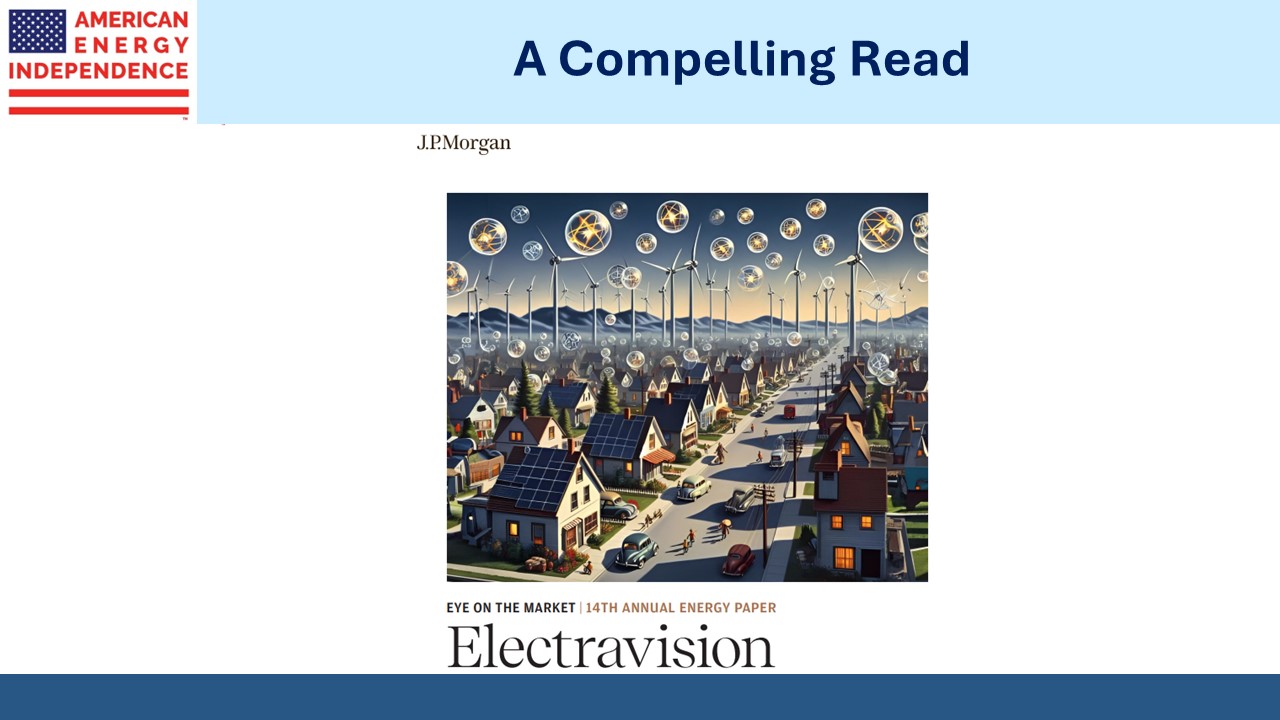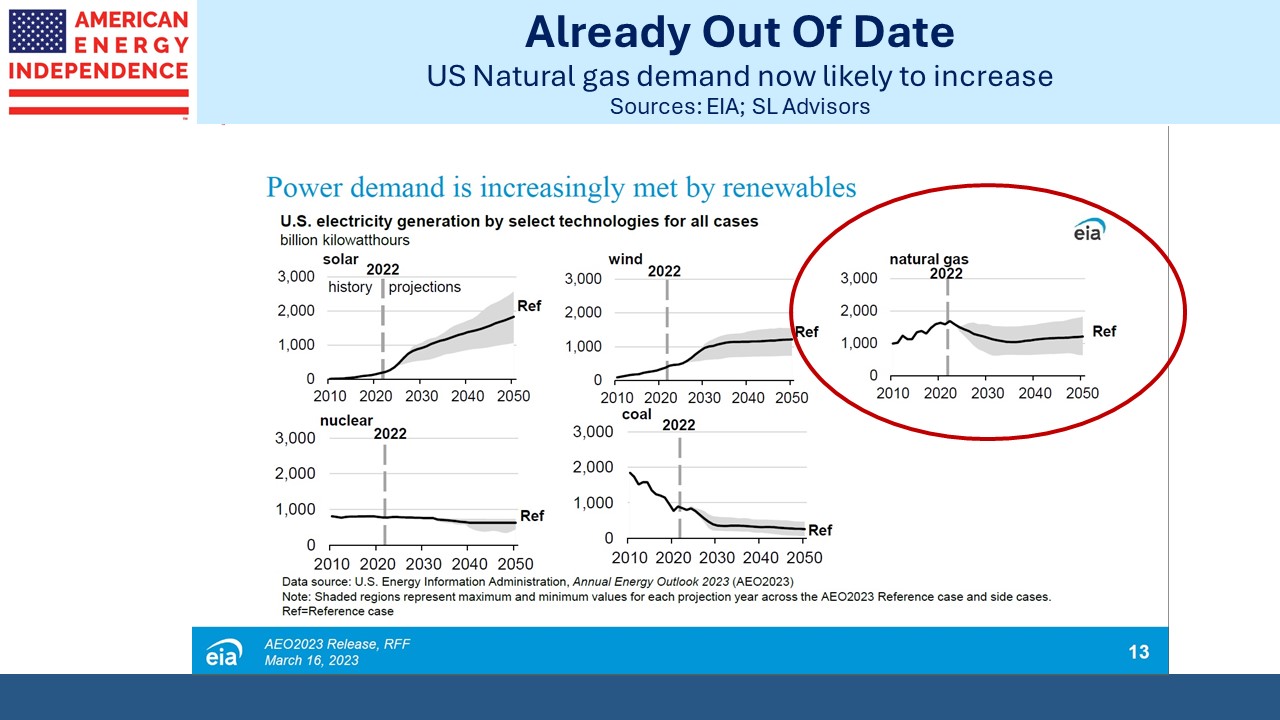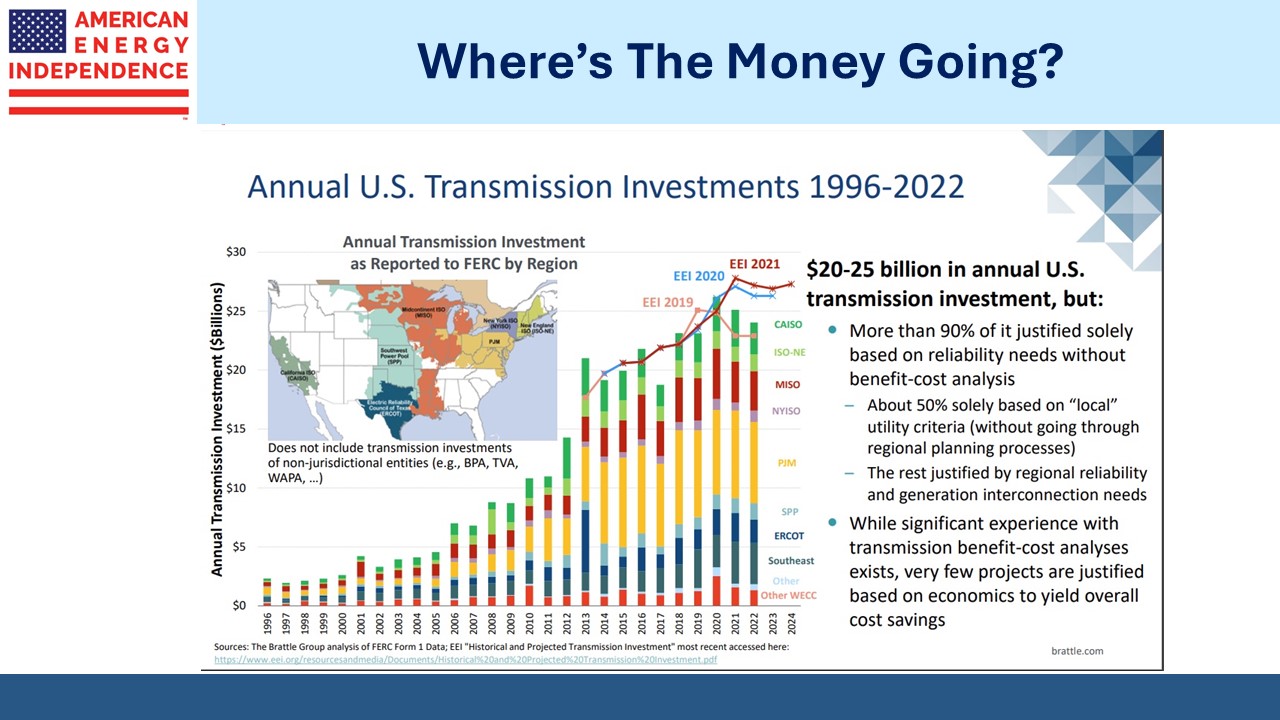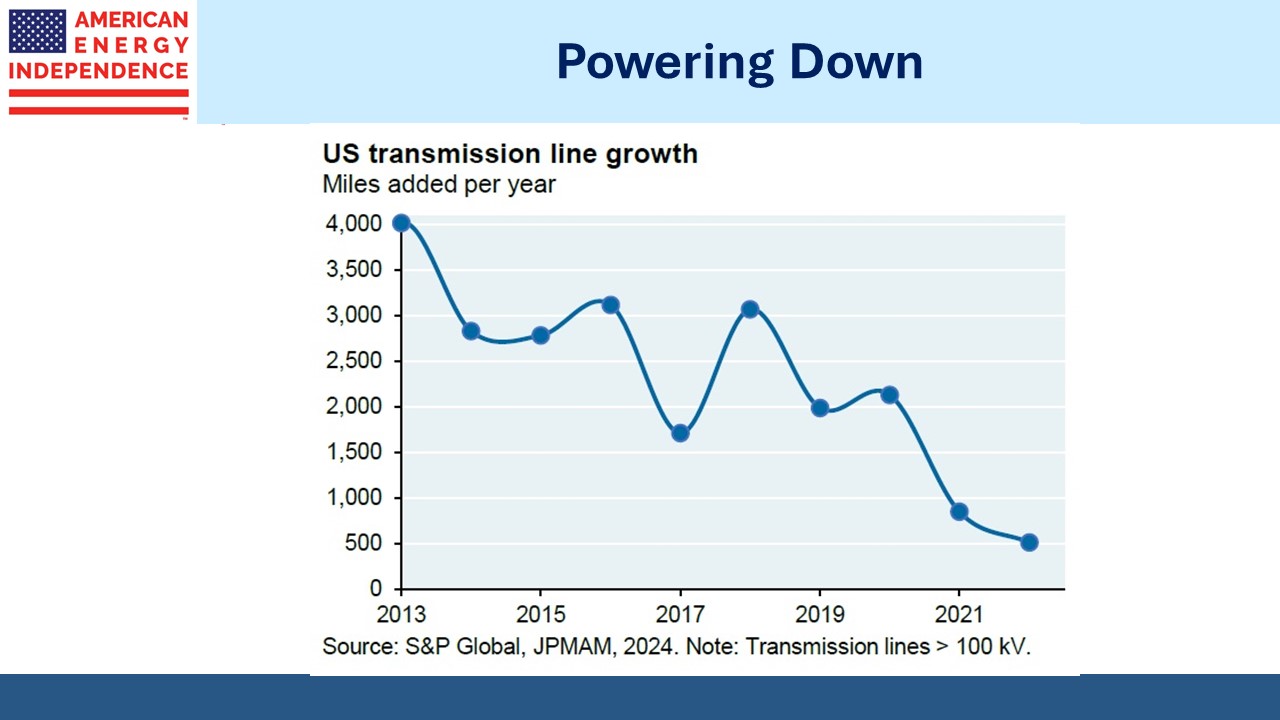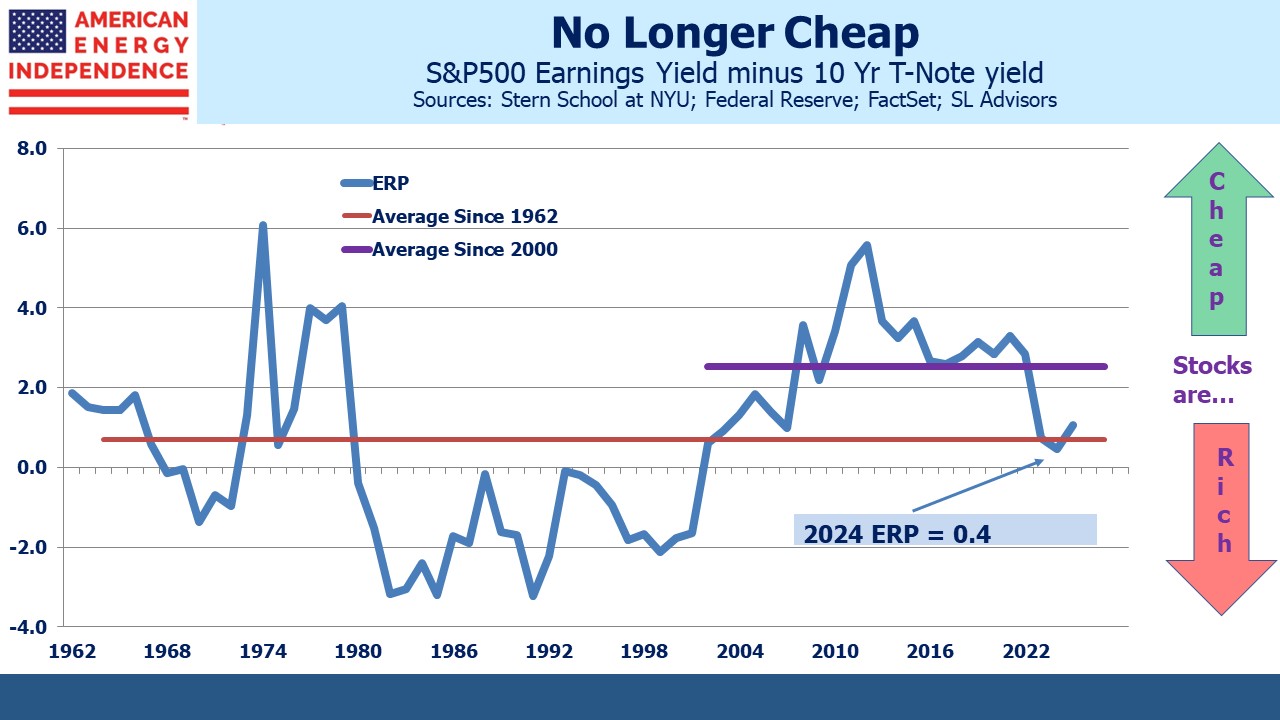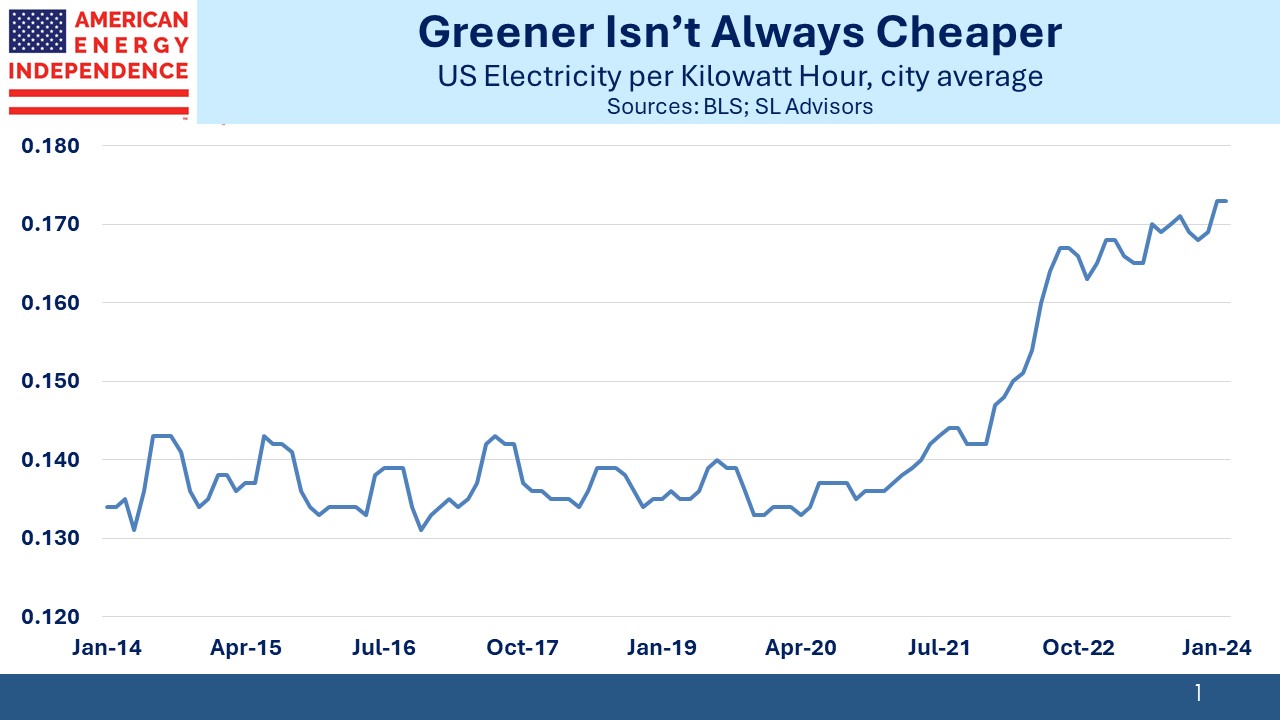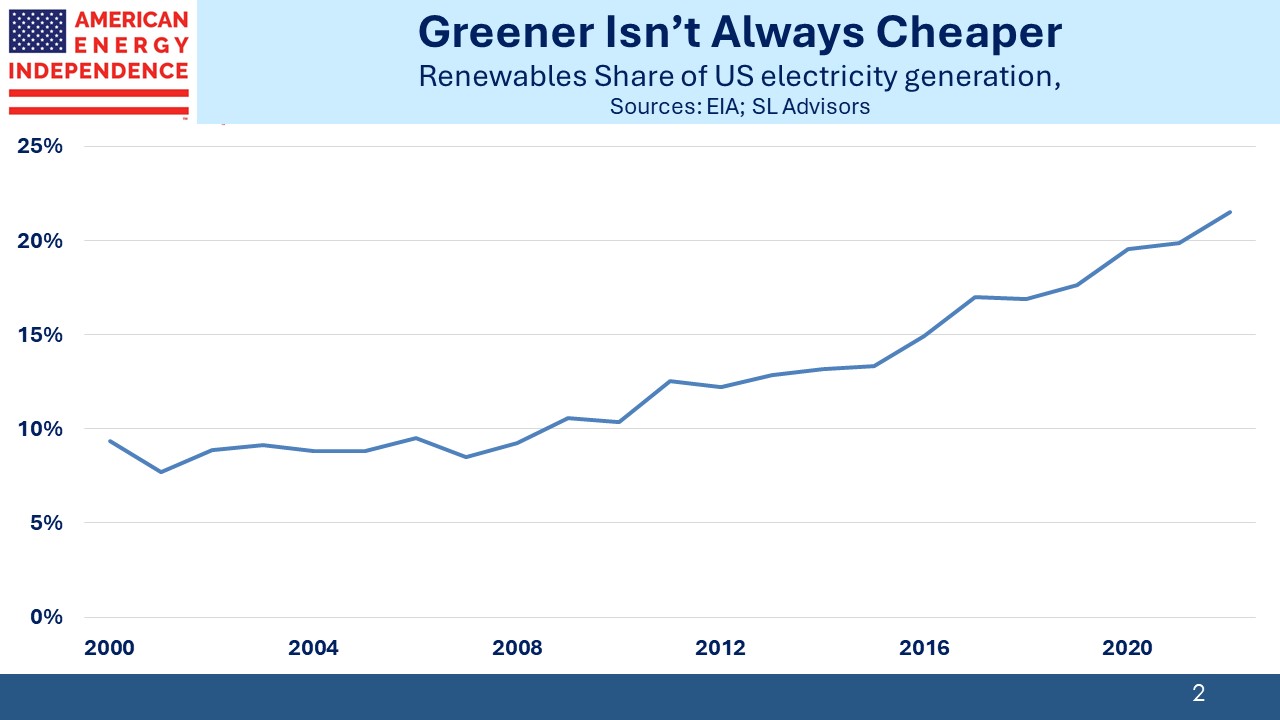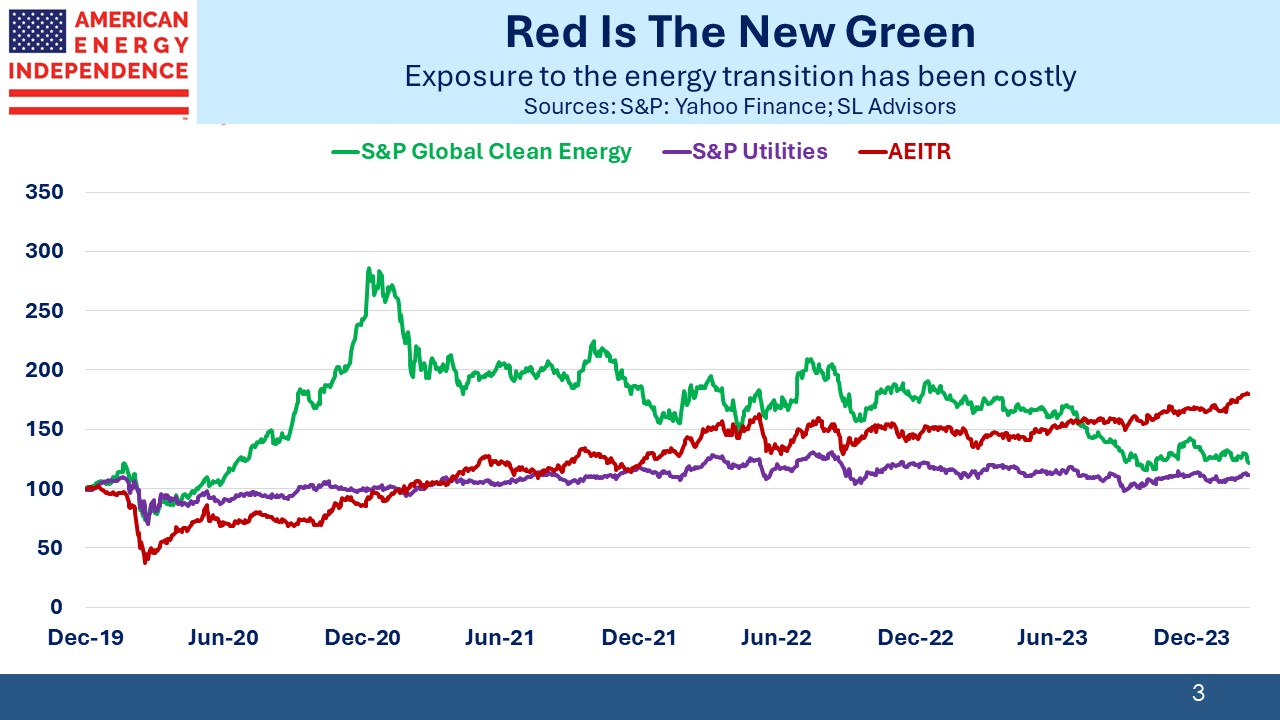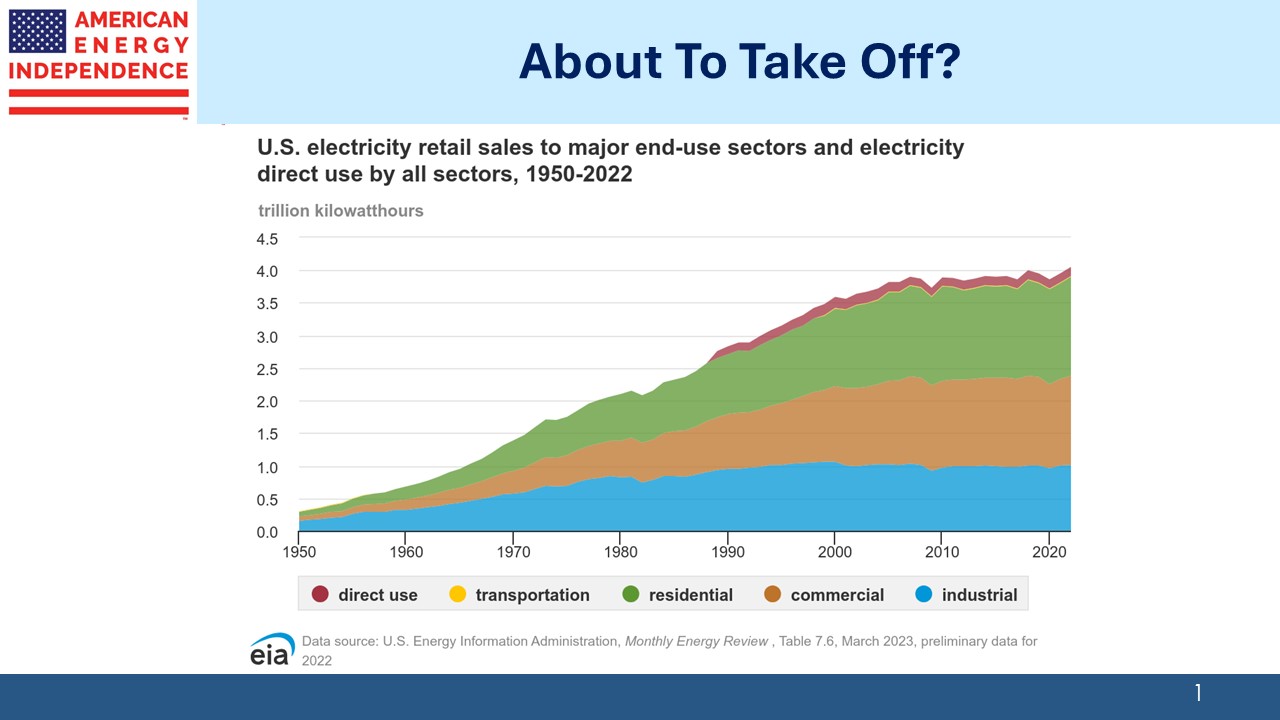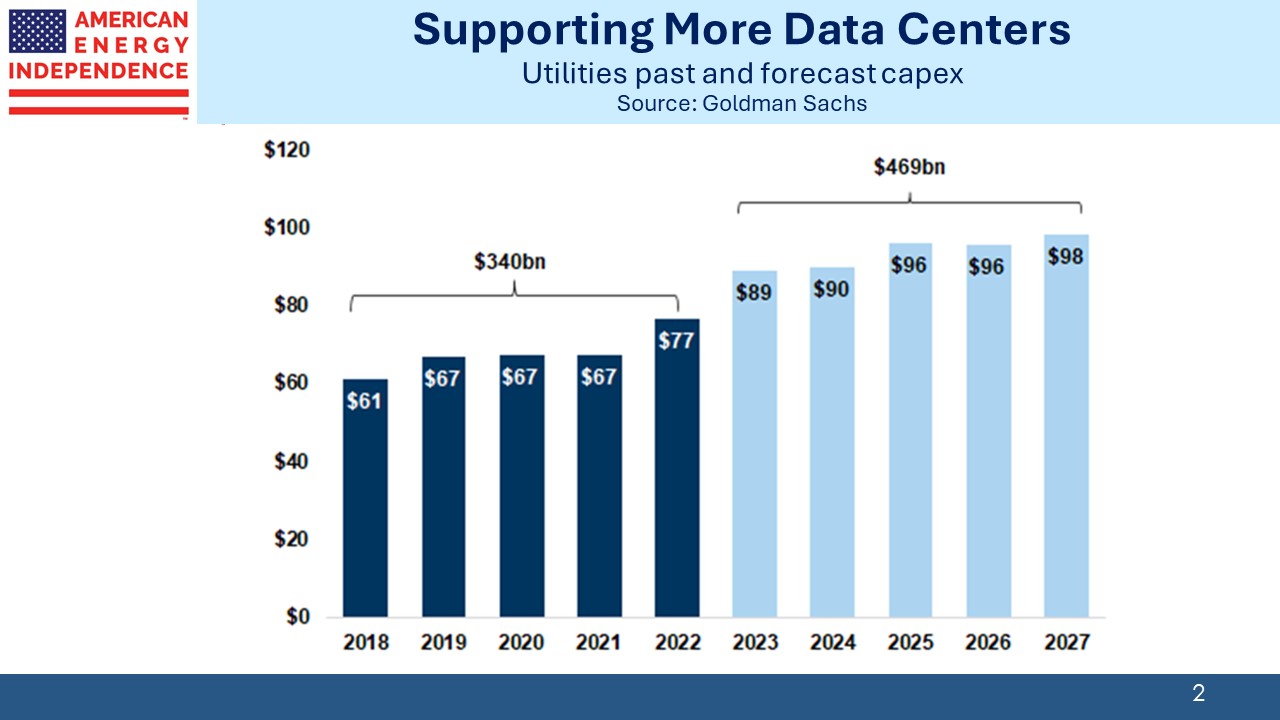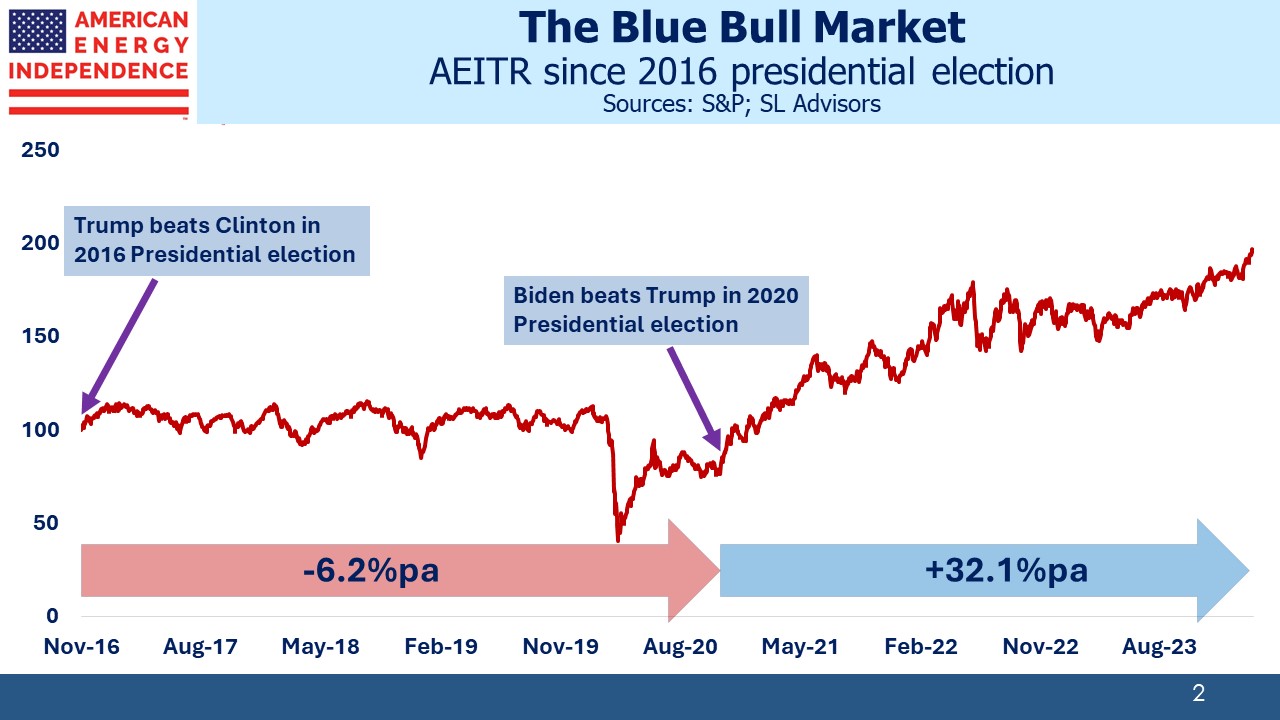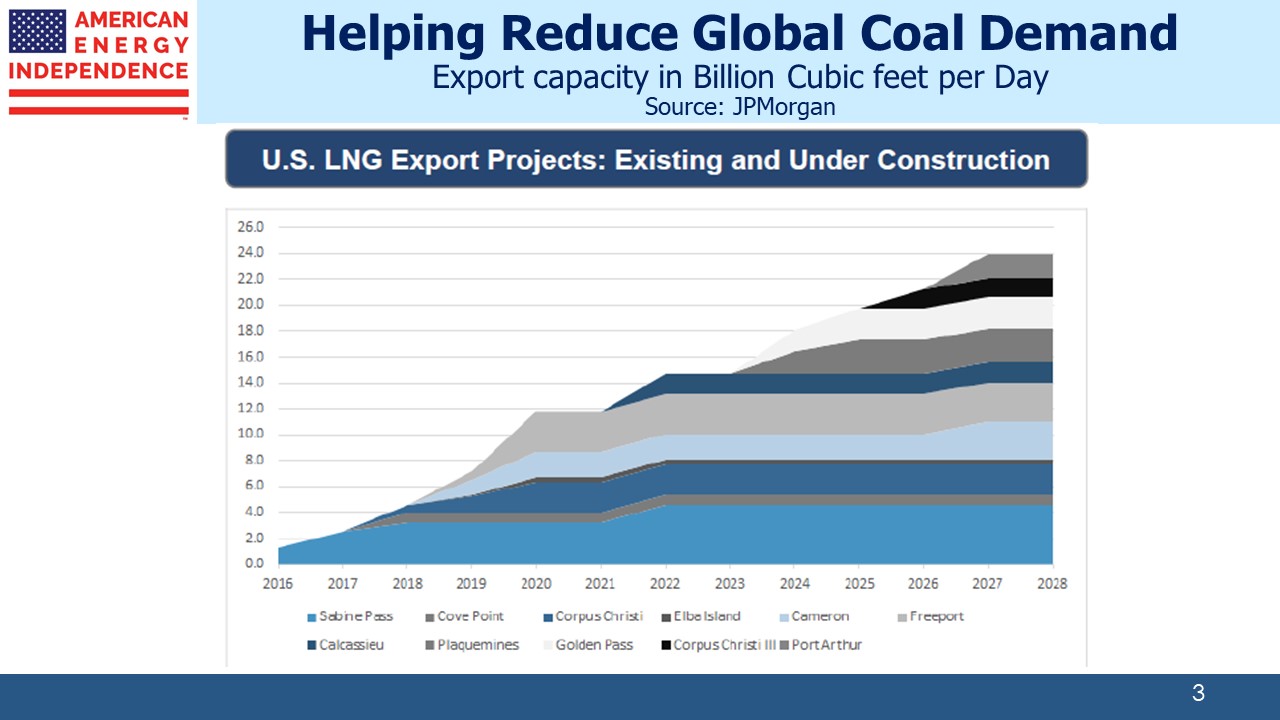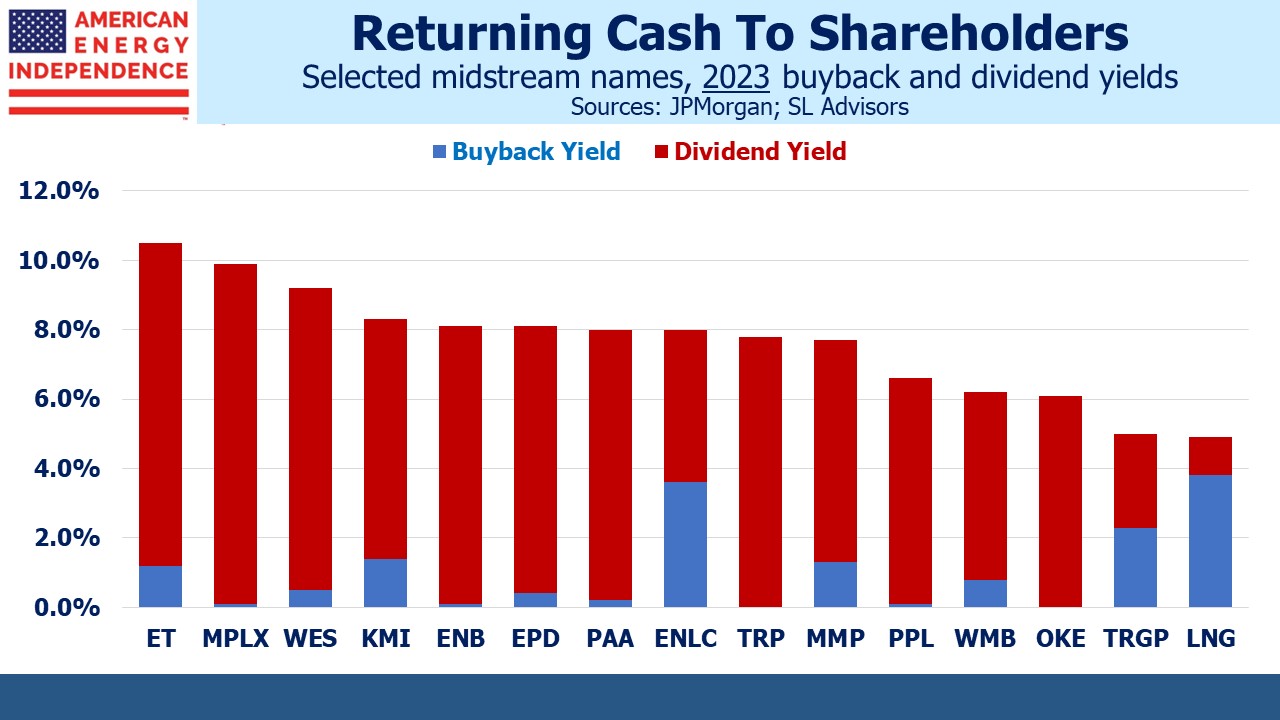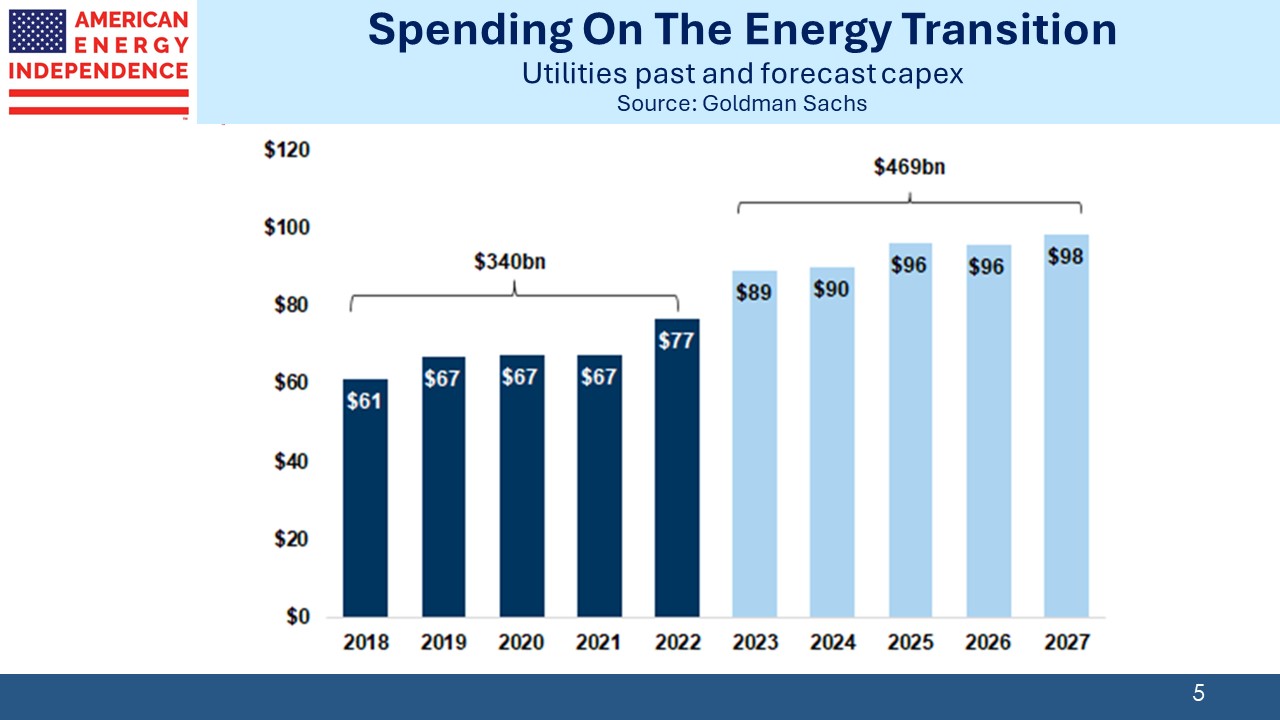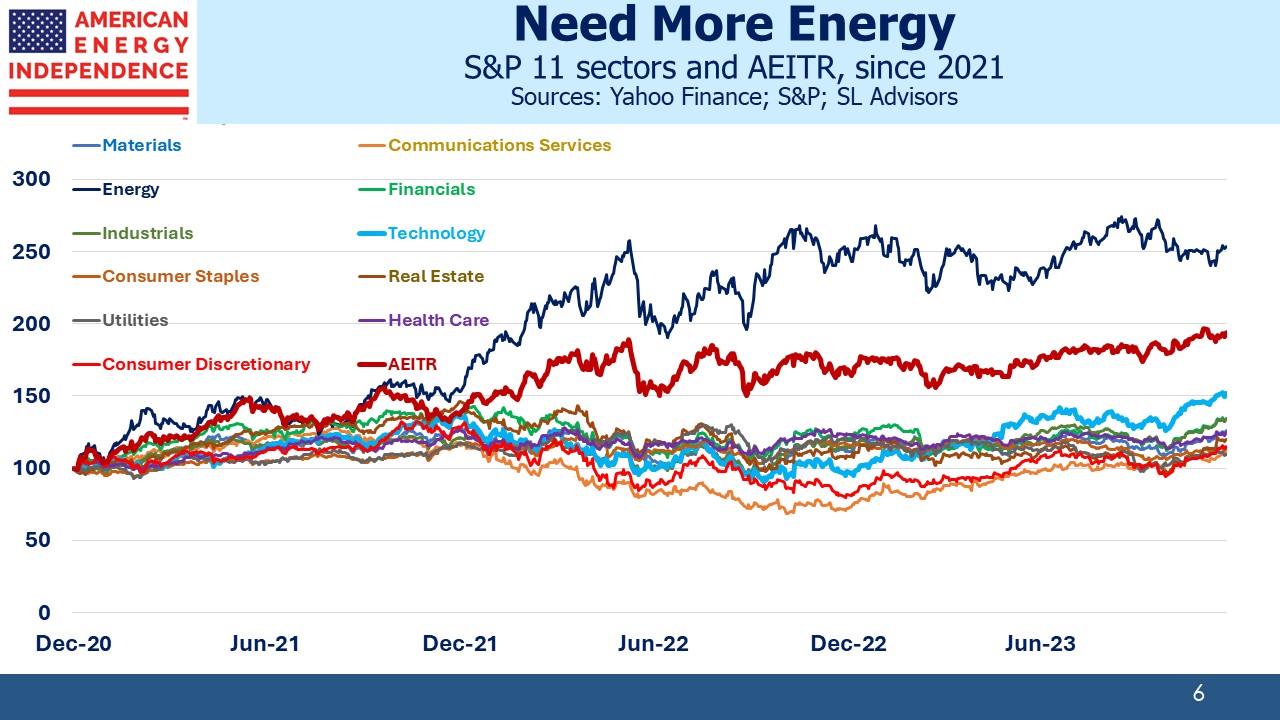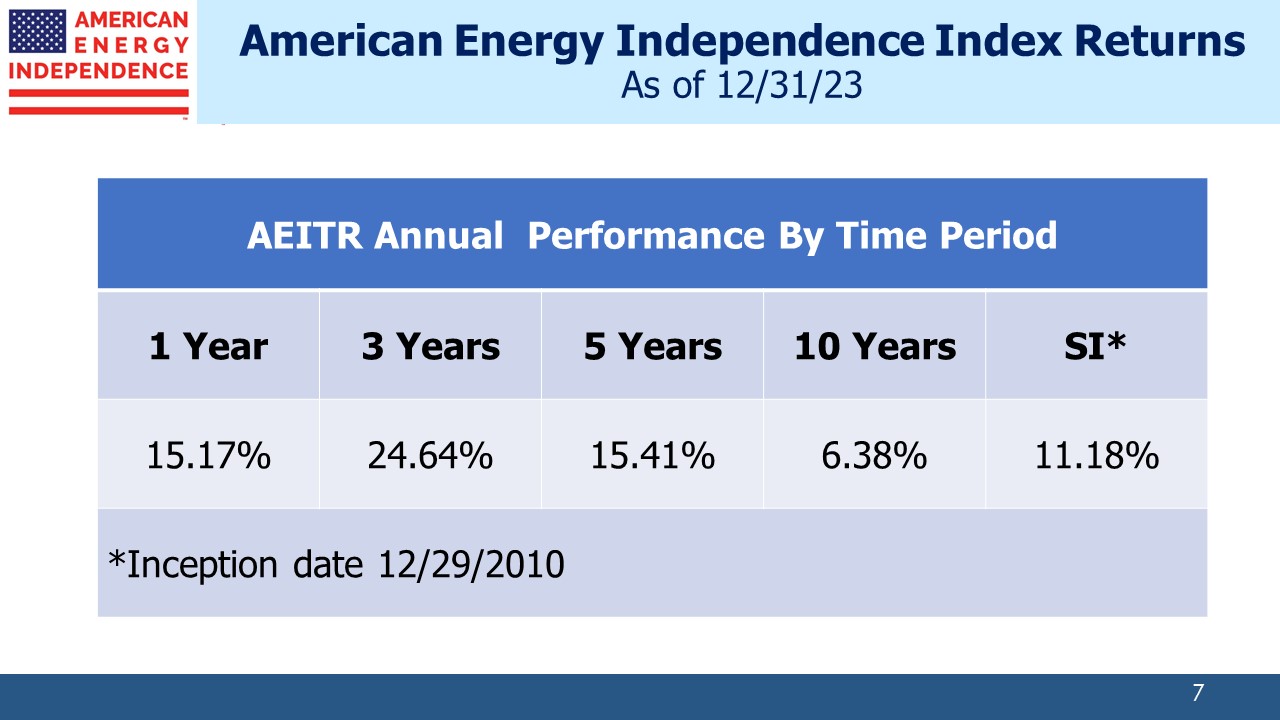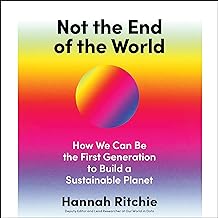America Still Has Cheap Energy

The Wall Street Journal called it “Biden’s Green-Energy Price Shock”, noting that electricity prices have increased by 21% since January 2021. That this has coincided with increased solar and wind output ought to surprise no-one. Thoughtful progressives should hail this as a positive development and argue that higher energy prices are an inevitable and worthwhile step in reducing CO2 emissions. But for the most part climate extremists have disingenuously argued that renewables are cheaper than reliable power – therefore they must feign surprise at rising electricity prices.
I spent last week in London. Like the rest of Europe, Britain endured a sharp rise in power prices following Russia’s invasion of Ukraine two years ago. Things have stabilized, but UK electricity is roughly 2X the cost of the US. Offshore windpower has been a success – the North Sea is a reliably blustery place. Last year wind generated 29% of the country’s electricity and 31% over the past twelve months. Natural gas still has a slight edge at 32%.
The US enjoys ample supplies of natural gas priced at around a quarter of what the UK pays. Expensive windpower isn’t the only reason for higher UK electricity prices.
Brexit either (1) inevitably harmed UK GDP growth by raising trade barriers to their neighbors, or (2) provided opportunities so far unexploited by the Conservative government, depending on whether you were against or for. Economic growth is anemic, and with voters going to the polls later this year PM Rishi Sunak has watered down earlier commitments to net zero, recognizing their economic and political cost going into an election he’s widely expected to lose.
Elsewhere in Europe Germany has embraced self-harm as national energy policy. Ruinously high energy prices (electricity is 4X or more vs the US) have led to reduced emissions via de-industrialization. German businesses are relocating and cutting domestic investment. German voters have been steadfast in their commitment to lead on climate change, a hugely expensive and ineffective effort swamped by China’s relentless coal-based growth.
Rising electricity prices are an easy target, as the WSJ op-ed showed. European energy policies have no place in America, and because of this our energy transition is going much better than theirs. Prices remain low and are attracting foreign direct investment. The US economy is growing strongly, easily the best among OECD countries. The benefits of cheap natural gas will grow as the only reliable way to meet increased power demands from data centers.
Americans impatiently expect persistent improvement from many things. This is curbing the efforts of climate extremists to foist expensive, intermittent energy on us without considering cost and reliability. We are less tolerant than Europeans of being told by liberal politicians what’s good for us.
Natural gas infrastructure is benefiting. In A Safe, Profitable Bet on the Green Transition, the WSJ noted how midstream companies such as Williams and Kinder Morgan are raising prices because of scarce capacity. Climate extremists have impeded new investments, thereby boosting free cash flow and helping traditional energy far outperform companies focused on renewables. Pipelines are beating the S&P500 this year.
Hug a climate protester and drive them to their next protest.
Visiting London, where I lived until 1982, triggers warm feelings of nostalgia along with sympathy for a great country that has endured poor leadership for too long. I delayed my arrival to avoid a widespread one-day rail strike. Such disruptions have been going on sporadically for eighteen months. Why do voters put up with that? Why are climate protesters still allowed to block traffic by standing in the road?
I reconnected with my old boss who, to my great fortune 42 years ago, persuaded his New York office to take on a young man beginning his career in finance. It was nice to thank him.
I saw Arsenal play Bayern Munich in the Champions League. It is possible to buy a ticket if you’re willing to pay a price too embarrassing to disclose. I saw Hamilton, with an enthusiastic UK audience that loved every minute. The lyrics of “You’ll Be Back” sung by George III, cleverly reflect imperial Britain’s slipping dominion over a people ready and able to reject it while retaining an eternal bond of shared values and culture.
Most importantly I saw old friends – I’m drawn back annually and now in my 60s have determined to visit more frequently. There are many great places in the world. You can enjoy them without owning a home there.
America is the world’s greatest country. I’m proud of my English heritage although Britain’s too liberal for me. Visits remind me why I emigrated. But I’m going to keep coming back.
We have three have funds that seek to profit from this environment:
Energy Mutual Fund Energy ETF Inflation Fund



